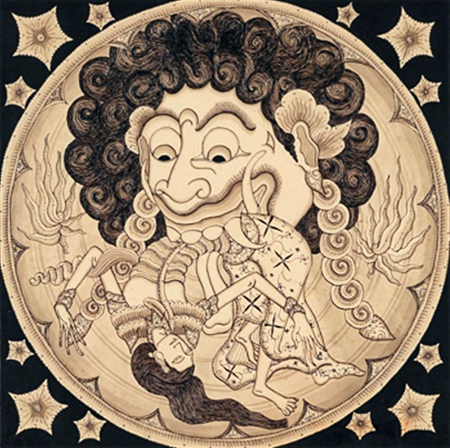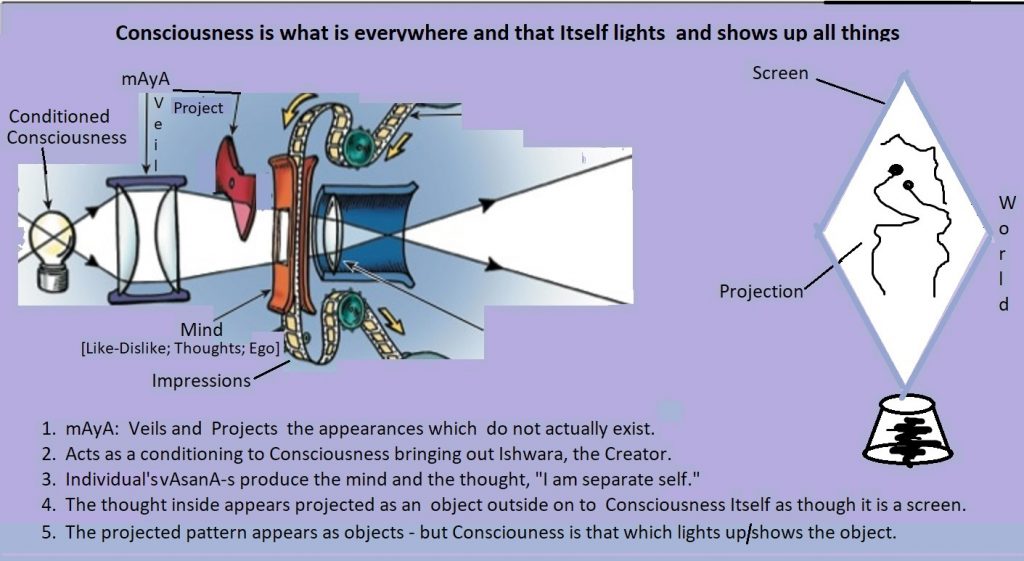Many people with a nodding acquaintance of Advaita often forget that the ‘ego’ is not totally non-existent. It is not ‘tuccha’ like ‘the hare’s horn’ or ‘the son of a barren woman.’ It has a relative existence. Like the world. Neither of these two have ‘Absolute Reality.’ In fact, the ego and the world are coeval – the ego with a sense of ‘agency’ and a claim of being the sentient ‘knower-doer’ and the world being the insentient ‘known’ and ‘the field for action.’ Because of their mutual dependency, there cannot be an ‘apparent’ world unless there is a seer to whom it has ‘to appear.’ Their relationship is something like that of the tree and the seed. Therefore, their real ‘source’ has to be something different from either of them – much like the earth without which neither there can be a seed nor a tree.
The ‘source’ for both the ego and the world, Advaita says, is the eternal immutable impartite brahman. Thus, in the Advaitic lingo, brahman is said to be the kAraNa for both the mutable ego and the world. Though the word kAraNa in common parlance means ‘cause,’ it does not stand to mean in that usual sense of a process relation, but it has to be taken to connote to be the ‘source for origination.’ Continue reading


